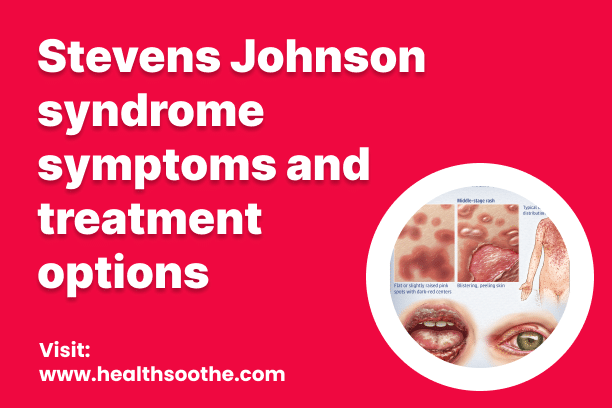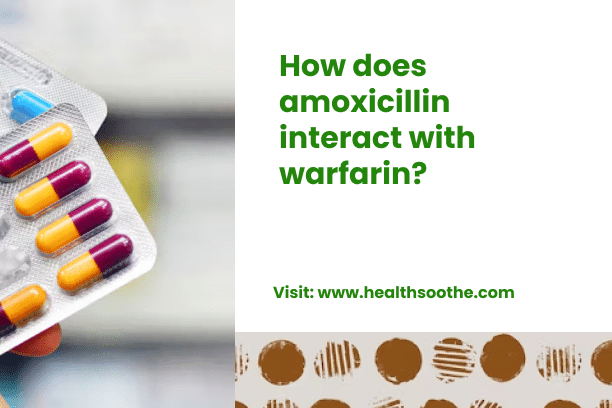Stevens-Johnson syndrome (SJS) is an uncommon yet severe condition affecting the skin and mucous membranes. Typically triggered by medication, it initiates with flu-like symptoms and progresses to a painful rash characterized by spreading and blistering. Subsequently, the affected skin’s top layer deteriorates, sheds, and begins healing over the course of several days.
SJS represents a medical emergency often necessitating hospitalization. Treatment primarily revolves around identifying and discontinuing the causative agent, tending to wounds, managing pain, and reducing potential complications during the skin’s regeneration process. Recovery may span from weeks to months.
A more severe variant known as toxic epidermal necrolysis (TEN) involves damage to over 30% of the skin surface along with extensive mucous membrane involvement.
Should medication be the culprit, it’s imperative to permanently avoid the triggering drug and similar medications in the future.
Symptoms
Several days preceding the onset of a rash, individuals may exhibit preliminary indications of Stevens-Johnson syndrome, such as:
- Fever
- Soreness in the mouth and throat
- Fatigue
- Irritated or burning eyes
As the syndrome progresses, additional manifestations may arise, including:
- Unexplained generalized skin discomfort
- A spreading red or purple rash
- Formation of blisters on the skin and the mucous membranes of the mouth, nose, eyes, and genital area
- Skin shedding occurring within days following blister formation
When to see a doctor
Stevens-Johnson syndrome demands prompt medical intervention. If you notice any signs or symptoms indicative of this condition, it’s imperative to seek emergency medical attention. Drug-related reactions can manifest while using a medication or within a two-week period following its discontinuation.
Read Also:
- Thick White Oblong Pill | Uses , Side Effect Interaction and More
- What You Should Know About Serotonin Syndrome
- What You Need To Know About The Lazarus Syndrome
- Coping And Living With Irritable Bowel Syndrome
- Savant Syndrome | Symptoms, Causes, Treatments, and Prevention
Causes
Stevens-Johnson syndrome is an uncommon and unpredictable condition. While your healthcare provider may not pinpoint its exact cause, typically it is triggered by medication, an infection, or a combination of both factors. Reaction to medication can occur during its usage or within two weeks after discontinuation.
Drugs known to potentially induce Stevens-Johnson syndrome comprise:
- Allopurinol (anti-gout medication)
- Anticonvulsants and antipsychotics (medications for seizures and mental illness)
- Antibacterial sulfonamides (including sulfasalazine)
- Nevirapine (Viramune, Viramune XR)
- Common pain relievers like acetaminophen (Tylenol, others), ibuprofen (Advil, Motrin IB, others), and naproxen sodium (Aleve)
Infections such as pneumonia and HIV are also linked to Stevens-Johnson syndrome as potential triggers.
Read Also: Overcoming Piriformis Syndrome: Exercises and Tips for Pain Relief
Risk factors
Factors that elevate the likelihood of developing Stevens-Johnson syndrome include:
- HIV infection: Individuals with HIV have a substantially higher incidence of Stevens-Johnson syndrome compared to the general population.
- Weakened immune system: Conditions such as organ transplantation, HIV/AIDS, and autoimmune disorders can compromise the immune system, heightening the risk of Stevens-Johnson syndrome.
- Cancer: Particularly individuals with blood cancer face an increased susceptibility to Stevens-Johnson syndrome.
- History of Stevens-Johnson syndrome: Past episodes of medication-related Stevens-Johnson syndrome predispose individuals to a recurrence if they are exposed to the same drug again.
- Family history: Having an immediate blood relative who has experienced Stevens-Johnson syndrome amplifies the risk of developing the condition.
- Genetic predisposition: Certain genetic variations contribute to an elevated risk of Stevens-Johnson syndrome, especially when combined with the use of medications for seizures, gout, or mental illness.
Pros and Cons of steven johnson syndrome
Pros::
- Early Detection
- Increased Awareness
- Research and Development
Cons:
- Life-Threatening Complications
- Limited Treatment Options
- Psychological and Emotional Impact
- Risk of Recurrence
Differences Between steven johnson syndrome and doxycycline
Stevens-Johnson Syndrome (SJS):
- SJS is a severe and potentially life-threatening skin condition characterized by a widespread rash, blisters, and skin detachment.
- It is typically triggered by an adverse reaction to medication, infection, or both.
- SJS requires immediate medical attention and hospitalization. Treatment focuses on discontinuing the offending medication, managing symptoms, and preventing complications.
Doxycycline:
- Doxycycline is an antibiotic medication belonging to the tetracycline class.
- It is commonly used to treat various bacterial infections, including respiratory infections, urinary tract infections, and certain sexually transmitted diseases.
- Doxycycline is generally well-tolerated, but like all medications, it can cause side effects in some individuals.
Alternative to steven johnson syndrome
Avoiding known triggers:
Patients with a history of SJS should avoid medications or substances known to trigger the condition. This may involve working closely with healthcare providers to identify safe alternatives for medications.
Complications
Complications associated with Stevens-Johnson syndrome include:
- Dehydration: Fluid loss from areas where the skin has shed, coupled with difficulty in fluid intake due to mouth and throat sores, can lead to dehydration.
- Blood infection (sepsis): Bacteria from infections can enter the bloodstream, causing sepsis. Sepsis is a rapidly progressing, life-threatening condition characterized by shock and organ failure.
- Eye issues: The rash from Stevens-Johnson syndrome may result in eye inflammation, dryness, and sensitivity to light. In severe cases, it can cause visual impairment and, rarely, blindness.
- Lung complications: Stevens-Johnson syndrome may lead to acute respiratory failure, wherein the lungs cannot effectively oxygenate the blood, posing an emergency situation.
- Permanent skin damage: Following Stevens-Johnson syndrome, the regenerated skin may exhibit bumps, unusual coloring (dyspigmentation), and scarring. Persistent skin problems may lead to hair loss, and diminished growth of fingernails and toenails compared to their pre-condition state.
Prevention
Preventing Stevens-Johnson syndrome involves several measures, including:
- Awareness and Education: Patients and healthcare providers should be vigilant about the signs and symptoms of Stevens-Johnson syndrome to facilitate early detection and intervention.
- Medication Monitoring: Healthcare professionals should carefully monitor patients’ reactions to medications, especially those known to be associated with Stevens-Johnson syndrome. Any signs of adverse reactions should be promptly addressed.
- Genetic Testing: Certain genetic markers may predispose individuals to Stevens-Johnson syndrome. Genetic testing can help identify patients at higher risk, allowing for more cautious medication management.
- Avoidance of Triggers: Patients with a history of Stevens-Johnson syndrome or related conditions should avoid known triggers, including specific medications and infections whenever possible.
- Proper Medication Use: Patients should adhere strictly to prescribed medication regimens and promptly report any unusual symptoms or side effects to their healthcare providers.
- Prompt Treatment of Infections: Timely treatment of infections can help prevent complications that may trigger Stevens-Johnson syndrome in susceptible individuals.
- Regular Follow-ups: Patients at risk or with a history of Stevens-Johnson syndrome should have regular follow-up appointments with their healthcare providers to monitor their condition and medication tolerance.
By implementing these preventive measures, the risk of developing Stevens-Johnson syndrome can be minimized, and early intervention can improve outcomes for affected individuals.
Conclusion
While Stevens-Johnson syndrome remains a rare and potentially life-threatening condition, proactive measures can significantly reduce its occurrence and mitigate its severity. Vigilance among healthcare providers and patients, coupled with medication monitoring, genetic testing where appropriate, and avoidance of known triggers, form the cornerstone of prevention strategies.
Timely intervention in the case of suspected reactions, along with regular follow-ups for at-risk individuals, further enhances preventive efforts. By fostering awareness and adherence to these measures, we can strive to minimize the incidence and impact of Stevens-Johnson syndrome, ultimately promoting better health outcomes and quality of life for all.
How useful was this post?
Click on a star to rate it!
Average rating 0 / 5. Vote count: 0
No votes so far! Be the first to rate this post.
We are sorry that this post was not useful for you!
Let us improve this post!
Tell us how we can improve this post?





